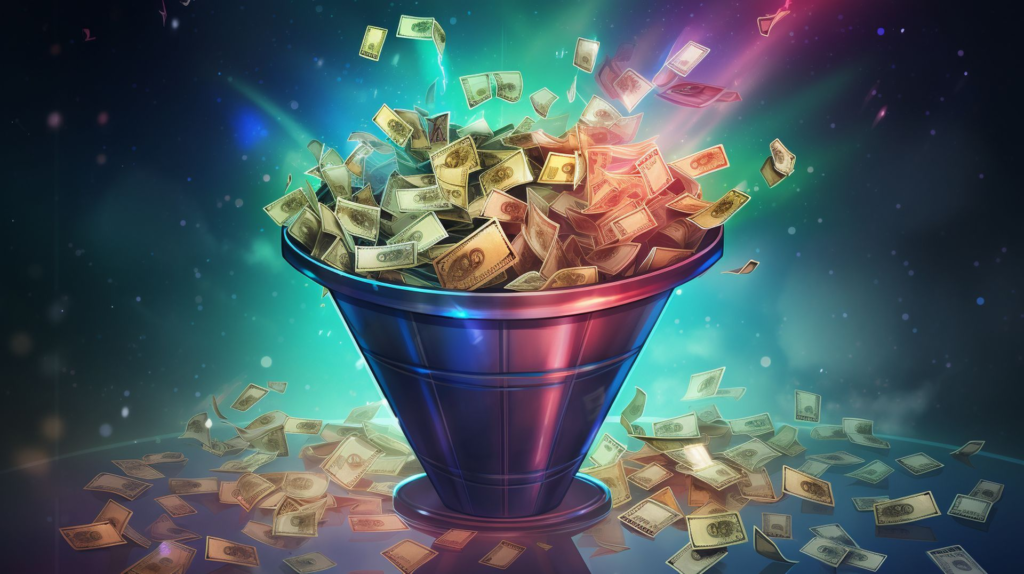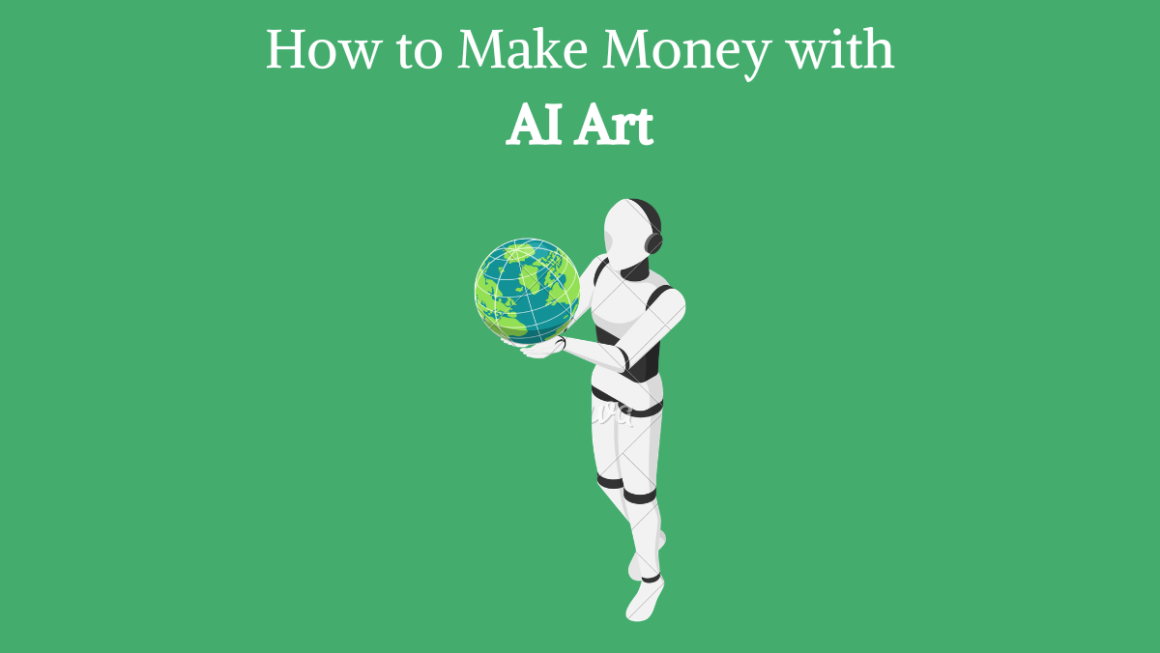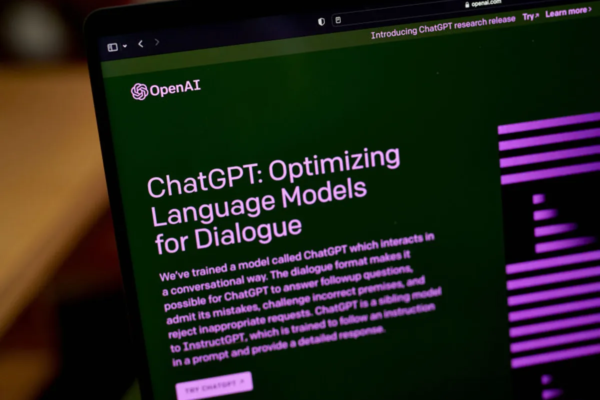Artificial Intelligence (AI) is changing the world without a doubt, and the art world is no exception to that change. With AI-powered tools and techniques, artists can now create pieces of art that push the boundaries of creativity. However, AI art is not just about creating captivating visuals. These AI-created visuals also present opportunities for artists to make money with AI art.
In this blog post, we will explore the AI art world and show you how to make money with AI art. We will cover everything from understanding the tools and techniques used in AI art creation to exploring different styles. Additionally, we will discuss legal and ethical concerns surrounding AI art and provide insights into the future of this rapidly evolving field.
Whether you are an aspiring artist looking to explore AI art or an established artist seeking new ways to make money with AI art, this blog post will be your comprehensive guide.

Understanding AI Art: A Brief Overview
Artificial Intelligence (AI) art is an exciting and innovative field that combines the power of technology and creativity. Before diving into the various ways to make money with AI art, it is essential to have a comprehensive understanding of what AI art is.
AI art uses algorithms and machine learning techniques to generate, manipulate, or enhance artistic content. It leverages the capabilities of AI to create unique and visually stunning artworks that were previously unimaginable. AI algorithms can analyze a lot of data, learn patterns, and generate artistic outputs based on that knowledge.
One popular technique used in AI art is Generative Adversarial Networks (GANs). GANs work to create realistic and visually appealing images. Through an iterative process, GANs can produce highly convincing and artistic outputs.
Another aspect of AI art is using AI-powered software tools specifically designed for artistic purposes. These tools provide artists with various functionalities, such as style transfer, image manipulation, and content generation. Artists can use the power of these tools to experiment with different artistic styles, create unique designs, and improve their creative vision.
Creating AI Art: Tools and Techniques
Creating AI art requires a combination of creative skills and technical knowledge.
What is Generative Adversarial Networks (GANs)
Generative Adversarial Networks (GANs) are popular in AI art creation. GANs have two neural networks – a generator and a discriminator. The generator generates new images or artworks, while the discriminator’s role is to distinguish between the generated images and real ones. Through an iterative process, GANs can produce highly realistic and visually appealing outputs.
Using AI Software for Art Creation
There are several AI-powered software tools available that artists can use to create AI-generated art. These tools provide a range of functionalities, such as style transfer, image manipulation, and content generation. Some popular AI art software include DeepArt, RunwayML, and ArtBreeder.
Style transfer is a technique that enables artists to apply the style of one image to another. By using AI algorithms, artists can change photographs or existing artworks into new and unique designs that combine different styles.
Image manipulation tools allow artists to manipulate and modify images using AI algorithms. These tools can help artists enhance their artworks by applying filters, adjusting colors, or adding unique effects.
Content generation tools use AI algorithms to generate new and original content. Artists can input certain parameters or prompts, and the AI algorithm will generate artistic outputs based on those inputs.
Exploring Different AI Art Styles
AI art encompasses a wide range of styles and aesthetics. Artists can explore different AI-generated styles and incorporate them into their own artistic practice. Some AI art styles include abstract, surreal, photorealistic, impressionistic, and more.
By experimenting with different AI-generated styles, artists can push the boundaries of their creativity and discover new artistic expressions. They can blend traditional artistic techniques with AI-generated elements, creating visually captivating and thought-provoking artworks.

Monetizing AI Art
Monetizing AI art involves finding ways to generate revenue from your AI-generated artworks.
Selling AI Art Online
One of the most accessible and popular ways to monetize AI art is by selling it online. There are numerous online platforms and marketplaces dedicated to selling art, both traditional and AI-generated. Some popular online platforms for selling AI art include:
- Etsy
- Saatchi Art
- Artfinder
When selling AI art online, it is important to provide detailed descriptions, high-quality images, and pricing information. Having a strong online presence with social media and promoting your artwork can also help attract potential buyers.
Participating in AI Art Auctions
Another avenue for monetizing AI art is by participating in AI art auctions. These auctions provide a platform for artists to showcase and sell their AI-generated artworks to collectors and art enthusiasts. Some notable AI art auction platforms include:
- Christie’s AI Art Auction: Christie’s, one of the world’s leading art auction houses, has organized auctions specifically dedicated to AI-generated art. Participating in these auctions can provide artists with exposure to a wide range of collectors and potentially lucrative sales.
- SuperRare: SuperRare is a digital art marketplace that specializes in blockchain-based art, including AI-generated art. Artists can mint their AI artworks as non-fungible tokens (NFTs) and sell them on the SuperRare platform.
Participating in AI art auctions can not only lead to sales but also help establish an artist’s reputation and increase the value of their AI art in the market.

Using AI Art in Commercial Projects
AI art can also be monetized through commercial projects. Businesses and organizations are increasingly interested in incorporating AI-generated art into their branding, marketing campaigns, products, and services. Artists can collaborate with companies to create customized AI-generated artworks for commercial use.
By leveraging their AI art skills and collaborating with clients, artists can secure commissions and licensing deals for their AI-generated artworks. This allows them to showcase their talent, gain exposure to a wider audience, and generate income through commercial partnerships.
Monetizing AI art requires a strategic approach, whether it’s selling online, participating in auctions, or exploring commercial opportunities.
Legal and Ethical Considerations of AI Art
As AI art continues to gain a reputation, it is important for artists to know the legal and ethical concerns that come with creating and selling AI-generated artwork.
Understanding Copyrights in AI Art
Copyright laws protect original creative works, including AI-generated artworks. However, determining the copyright ownership of AI art can be complex. Sometimes, the copyright may belong to the artist who created the AI algorithm. In others, it may be shared between the artist and the AI system.
Artists need to understand the copyright implications of their AI-generated artworks and take necessary steps to protect their intellectual property rights. This may involve documenting the AI creation process, clearly defining ownership rights, and considering licensing options for their AI art.
Ethical Issues in AI Art Creation
AI art raises various ethical questions, particularly regarding the artist’s role, the artwork’s authenticity, and the potential biases embedded in AI algorithms. Artists must be mindful of these ethical considerations and strive to create AI art that respects ethical boundaries.
One ethical concern is the question of authorship. Some argue that AI-generated artworks lack the human touch and intentionality associated with traditional art. Artists must consider how their AI-generated artworks are attributed and ensure transparency in the creation process.
AI algorithms can also inherit biases present in the training data, potentially perpetuating stereotypes or discriminatory practices. Artists should be aware of these biases and take steps to mitigate them in their AI art creation.
Navigating the Art Market’s Acceptance of AI Art
The art market has traditionally favored human-created artworks, and the acceptance and valuation of AI art can vary. Artists venturing into AI art must navigate the art market’s reception and educate collectors, galleries, and institutions about the value and significance of AI-generated artworks.
Building credibility as an AI artist may involve showcasing the artistic process, highlighting the uniqueness of AI-generated art, and engaging with the art community to foster understanding and appreciation.
Being aware of the legal and ethical considerations surrounding AI art is crucial for artists aiming to make money from their AI-generated artworks. By navigating these considerations responsibly, artists can contribute to the growth and acceptance of AI art in the art world.

Future of AI Art: Trends and Opportunities
The future of AI art is filled with exciting possibilities and opportunities. In this section, we will explore some of the emerging trends and potential avenues for growth in the field of AI art.
Emerging Trends in AI Art
- Collaborative AI Art: Artists are increasingly collaborating with AI algorithms, treating them as creative partners rather than mere tools. This collaborative approach allows for a fusion of human creativity and AI capabilities, resulting in truly unique and innovative artworks.
- Interactive AI Art: Interactive AI art engages viewers in a participatory experience, blurring the boundaries between the artist, the artwork, and the audience. This trend allows viewers to interact with AI-generated artworks in real time, creating dynamic and immersive experiences.
- AI-Enhanced Traditional Art: AI technology can be used to enhance traditional art techniques. Artists can leverage AI algorithms to experiment with new materials, colors, and styles, pushing the boundaries of traditional art forms and creating captivating hybrid artworks.
Potential Opportunities in the AI Art Market
- Artificial Intelligence as a Service (AIaaS): As AI technology becomes more accessible, artists have an opportunity to provide AIaaS, offering AI-generated artworks on a subscription or on-demand basis. This allows individuals and businesses to access and utilize AI art for various purposes.
- AI Art Consultation and Curation: With the growing interest in AI art, there is a need for experts who can guide collectors, galleries, and institutions in understanding and acquiring AI-generated artworks. Artists with expertise in AI art can offer consultation and curation services, helping clients navigate the AI art market.
- Artificial Intelligence Exhibitions and Events: Organizing exhibitions and events dedicated to AI art can create platforms for artists to showcase their AI-generated artworks and engage with art enthusiasts. These events can foster dialogue, collaboration, and appreciation for AI art.
The Role of AI in Redefining Art
AI is fundamentally reshaping the art landscape, challenging traditional notions of creativity and artistic expression. As AI technology advances, artists have an opportunity to redefine art by harnessing AI capabilities and exploring new artistic possibilities.
AI art not only pushes artistic boundaries but also prompts critical discussions around the nature of creativity, authorship, and the relationship between humans and machines. Artists can actively contribute to these conversations, shaping the future of art and technology.

Conclusion
In conclusion, the future of AI art holds immense potential for artists to explore, innovate, and monetize their creations. By staying abreast of emerging trends, tapping into new opportunities, and embracing the transformative power of AI, artists can carve out a unique space in the evolving landscape of AI art.
As we conclude this blog post, we have given a variety of information on how to make money with AI art. Whether you are an artist eager to venture into AI art or an art enthusiast curious about this emerging field, we encourage you to explore, experiment, and embrace the exciting possibilities that AI art offers.




